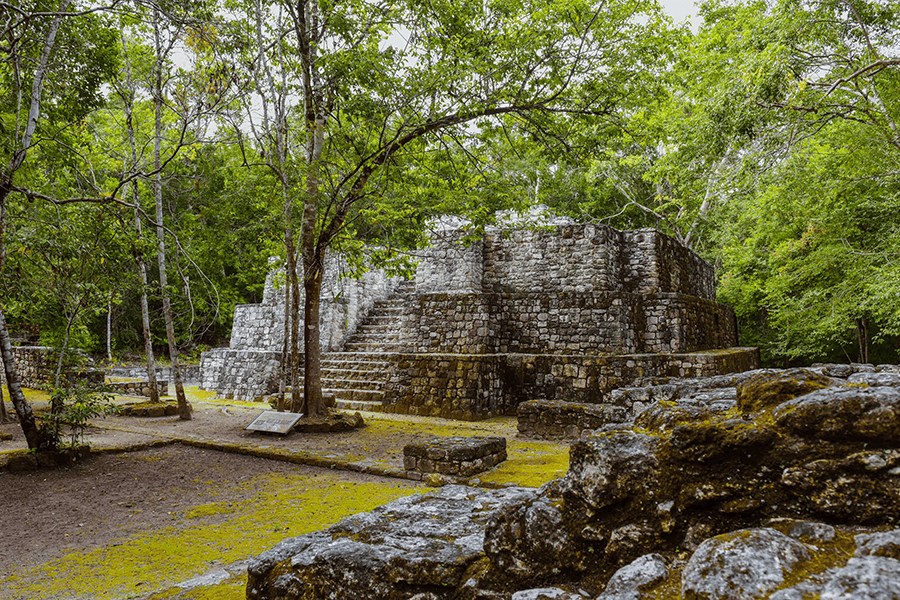Eight decades later, a French lake remains contaminated by explosives from World War II.

Introduction: The Legacy of War Contamination
The legacy of war contamination extends far beyond the immediate ravages of battle, permeating landscapes and lives long after hostilities cease. In the aftermath of World War II, countless sites across Europe became unintended memorials to conflict, as remnants of explosives sank into soil and water. This hidden peril not only poses a threat to environmental health but also to the local communities who inhabit these areas, forcing residents into a silent struggle with history itself.
As we delve into this issue with a focus on the French lake still bearing scars from wartime destruction, we uncover stories that transcend mere statistics. The lake has become a chilling reminder of mankind’s capacity for both creation and destruction; its contaminated waters ripple with tales of resilience against an often-unseen enemy. Navigating these forgotten narratives brings forth crucial conversations about responsibility—who should be held accountable for remediation efforts? Further complicating matters is how such environmental legacies shape cultural identity in post-war societies, forever intertwining memories of conflict with contemporary life.
Historical Background: World War II Explosives
The legacy of World War II extends far beyond the battlefield, infiltrating the very landscapes that witnessed the conflict. As nations mobilized for unprecedented warfare, a staggering arsenal of explosives was created and deployed, many remaining unexploded or abandoned in various locations. This period marked a turning point not only in military tactics but also in horrific environmental consequences; thousands of tons of munitions were simply discarded after conflicts ended, leaving behind hidden dangers that still pose risks today.
In France, lakes like those near the Meuse River now harbor remnants of this turbulent history beneath their serene surfaces. These buried explosives are more than mere artifacts; they serve as poignant reminders of the violent past and its lasting impact on ecosystems. Interestingly, investigations into these sites have revealed how chemical residues can disrupt aquatic life and contaminate local water supplies, thereby interlinking issues of historical accountability with current public health concerns. The haunting presence of WWII munitions underlines an urgent need for ongoing remediation efforts—not just to reclaim land and preserve biodiversity but to ensure communities impacted by this legacy can look forward to a safer future.
The Lake’s Geographical Significance in France
Nestled in the heart of France, this lake serves not only as a picturesque backdrop but also as a crucial geographical landmark that encapsulates the country’s tumultuous history. Its strategic location made it an essential asset during World War II, drawing military attention and resulting in the explosive remnants that continue to affect its waters today. The tranquil surface belies a treacherous past, inviting reflection on how natural landscapes can become intertwined with human conflict.
Moreover, the lake’s surrounding ecosystem has been significantly shaped by these historical events. While nature attempts to reclaim its territory, the lingering contamination poses challenges for biodiversity and local communities alike. This struggle is emblematic of broader environmental issues faced by many regions scarred by war; it prompts us to consider how we might balance ecological restoration with historical preservation. As scientists and historians work together to unravel this dual narrative, the lake stands as a poignant reminder of our responsibility to safeguard both nature and memory for future generations.
Types of Contaminants Found in the Lake
The contamination in the lake is not just a relic of the past; it presents a complex interplay of various pollutants that pose ongoing risks to both the environment and human health. Heavy metals like lead, arsenic, and mercury leach into the water from deteriorating munitions, creating pockets of toxicity that threaten aquatic life. These contaminants disrupt ecosystems by bioaccumulating in fish populations, thereby infiltrating the food chain and impacting species far beyond the immediate vicinity.
Furthermore, unexploded ordnance (UXO) remains buried beneath the lake’s surface, posing physical hazards while also releasing harmful chemicals as they corrode over time. The more insidious threat comes from explosive residues such as TNT and RDX — compounds designed for devastation but now lingering as reminders of warfare’s destructive legacy. Notably, these residues can alter water quality even years later, presenting challenges for local wildlife adaptation and posing questions about long-term ecological resilience. With each passing season, this unique ecosystem reveals new layers of complexity tied to its tumultuous history and raises urgent conversations about remediation strategies that preserve its natural beauty while ensuring safety for generations to come.
Impact on Local Wildlife and Ecosystems
The long-lasting contamination of the French lake has profound implications for local wildlife and ecosystems. Toxic residues from decades-old explosives seep into the water, altering both its chemical balance and habitat structures. Aquatic species, reliant on clean water for survival, face declining populations as their breeding grounds become inhospitable. Eroded food chains can lead to a cascading effect; fish that once thrived here now struggle, putting pressure on birds and mammals that depend on them as a primary food source.
Moreover, sensitive species are particularly vulnerable to such disruptions. Amphibians – vital indicators of environmental health – exhibit decreased reproductive success in contaminated waters, signaling broader ecological distress. As biodiversity diminishes, so too does resilience; ecosystems become less capable of withstanding other environmental pressures like climate change or invasive species. The legacy of wartime remnants not only leaves scars on the land but also echoes through generations of wildlife struggling to adapt in a changed environment where pollution is an ever-looming threat to their very existence.
Efforts to Clean Up the Contamination
In recent years, the cleanup efforts at this historically significant lake have gained momentum as environmentalists and local authorities collaborate to address the contamination left by World War II munitions. Innovative technologies, such as remote-operated underwater drones and sonar mapping, are being employed to locate buried explosives accurately. These advanced tools not only enhance efficiency but also minimize disruption to the fragile aquatic ecosystem, drawing attention from scientists who study both pollution remediation and marine biology.
Community involvement plays a vital role in these initiatives; local volunteers regularly participate in organized clean-up days that foster a sense of stewardship for their surroundings. Simultaneously, educational programs aim to raise awareness about the ongoing risks posed by unexploded ordnance and encourage responsible engagement with nature. Unlike past cleanup endeavors that may have appeared overwhelming or insurmountable, this renewed commitment reflects a shift toward sustainable practices—consolidating historical accountability with proactive environmental activism for future generations.
Community Awareness and Involvement Initiatives
Community awareness and involvement initiatives play a pivotal role in addressing the lingering contamination from World War II at the French lake. Engaging local residents can transform passive observers into active custodians of their environment. By organizing workshops, town hall meetings, and educational campaigns, communities can come together to share knowledge about the historical context of the contamination while fostering a sense of collective responsibility. Such grassroots movements not only amplify awareness but also empower individuals to participate in clean-up efforts and advocate for policy changes that prioritize environmental health.
Moreover, collaboration with local schools can spark generations of eco-conscious citizens through hands-on projects that illustrate the importance of preserving natural resources. Programs like citizen science allow residents to gather data on water quality and biodiversity, connecting them more deeply with their surroundings while influencing future remediation efforts. As communities rally around shared goals, they forge stronger bonds—transforming what could be seen as an insurmountable problem into an opportunity for resilience and renewal that bridges past legacies with future possibilities.
Government Policies Addressing Environmental Hazards
The legacy of contamination from historical conflicts, such as the unexploded ordnance found in French lakes, underscores the urgent need for government policies that address environmental hazards with a proactive and sustained approach. One innovative strategy gaining traction involves integrating environmental remediation efforts directly into broader economic and social policies. By framing environmental cleanup as not only an ecological necessity but also an economic opportunity—through job creation in green tech and restoration projects—governments can garner wider support for these initiatives.
Furthermore, there is a growing recognition that successful remediation requires collaboration between various stakeholders: local communities, scientists, and policy-makers must come together to design context-specific solutions. Governments are beginning to embrace participatory governance models where affected communities play active roles in identifying hazards and determining priorities for action. This level of engagement not only enhances policy effectiveness but also fosters public trust—a crucial element in implementing long-term strategies for managing lingering dangers from past conflicts like those found in France’s lakes.
Ongoing Research and Monitoring Activities
Ongoing research and monitoring activities in the affected areas are crucial for understanding the long-term impacts of World War II-era contamination on local ecosystems. Scientists employ a combination of advanced technological tools, such as remote sensing and underwater drones, to map the extent of explosive remnants beneath the lake’s surface. These innovations not only enhance our knowledge of pollution distribution but also facilitate more precise remediation efforts. Integrating citizen science initiatives allows local communities to engage directly in these monitoring efforts, fostering stewardship of their environment while contributing valuable data.
The collaborative nature of this ongoing research is equally promising; partnerships between universities, governmental agencies, and environmental organizations have created a multidisciplinary approach that spans geology, biology, and toxicology. This collective effort enables researchers to assess how contaminants are interacting with aquatic life and altering food webs over time. As findings emerge from rigorous studies, they illuminate new risks posed by these legacy munitions—including potential bioaccumulation in fish species that are critical for both human consumption and ecological balance—thus demonstrating the urgency for comprehensive intervention strategies moving forward.
Conclusion: Lessons Learned for Future Generations
The situation at the French lake serves as a poignant reminder of the long-lasting repercussions of war, highlighting the importance of accountability in military practices. As future generations study this environmental crisis, they must embrace a holistic perspective that integrates ecological health with historical reflection. The legacy of unexploded ordnance should not merely be seen through the lens of past conflicts, but as an ongoing challenge that requires innovative approaches to remediation and sustainability.
Moreover, this case exemplifies the urgency for stricter regulations on military activities and better management of explosive remnants worldwide. It invites a fundamental shift in how we perceive conflict-related damage; no longer can it be treated as merely temporary collateral but rather as a persistent threat to life and biodiversity—one that affects communities far beyond battlefields. Future leaders must advocate for preventative measures that prioritize environmental stewardship, ensuring that lessons from the past inform policies aimed at safeguarding our planet for generations yet to come.




